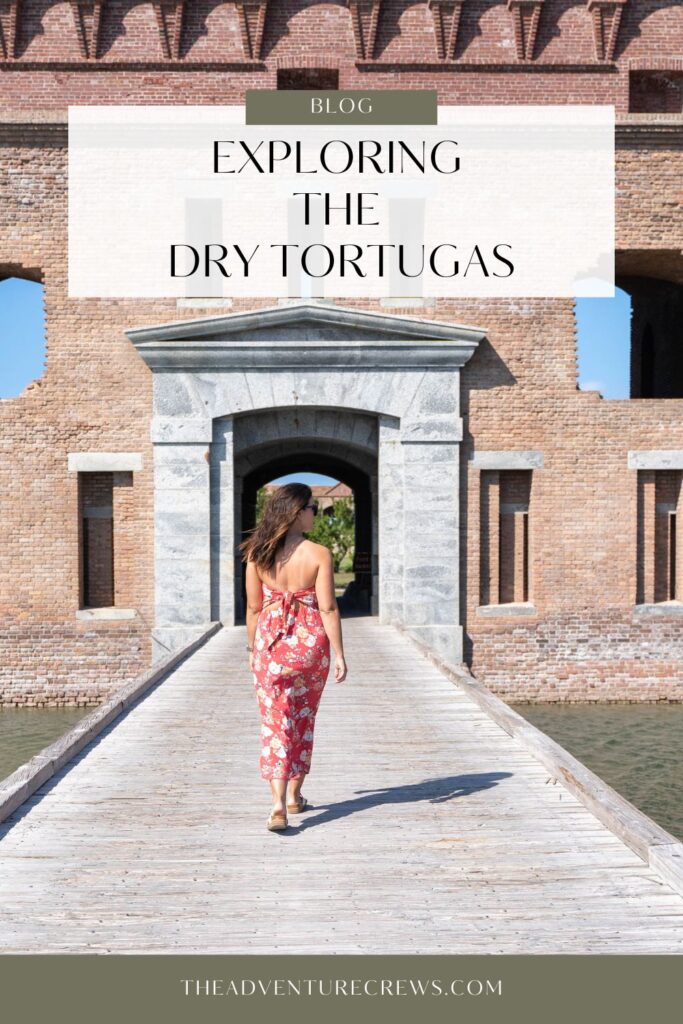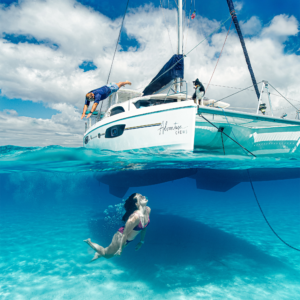Having been in Key West the past week, we set sail early en route to our next destination: the Dry Tortugas. These seven islands make up what’s known as the Dry Tortugas and are technically the westernmost part of the Florida Keys. Apart from coral reefs and bird breeding grounds, there’s nothing much there. Oh, except for the massive, two-tiered fortress perched in the middle of it all: the imposing Fort Jefferson.
Unfinished business
This unfinished coastal fortress is beyond huge; when we walked inside, its size literally took our breath away. Made up of 16 million bricks and spanning sixteen acres (that’s about twelve football fields!) it’s the biggest masonry structure in the Americas. It has six sides, a sea wall with a moat, and long hallways and arches looking out to sea.
The whole place echoes with history. 1846 saw construction begin, with the fort intended as a military garrison to protect the Florida Straits from piracy and to offer ships a place to restock. Although the government hired carpenters and masons for the work, slaves bore the brunt of the labor. The Union Army stationed personnel there to protect it from rebels during the Civil War, and after the war it was used as a prison for army deserters. But with yellow fever outbreaks and a constant battering by hurricanes and tropical storms, the war department eventually removed the garrison in 1874, and the place was left unfinished.
Fort Jefferson never could decide what it wanted to be when it grew up; it’s been a coaling station, a quarantine spot, and during the Civil War, it even housed women and children.
And now? With its museum, bookstore, and guided tours, it attracts tourists like us. But there are others who come here, and the boats they arrive in look nothing like the tourists’ vessels dotting the harbor. 2022 has seen an influx of Cuban migrants averaging well over 2,000 per month landing in the Florida Keys in search of a better life.
A Sobering Reality
These boats, nicknamed ‘chugs’ because of how slowly they chug along, are simply scraps of sheet metal, styrofoam, tires—you name it—lashed together around an old car diesel engine and sprayed with foam to make them ‘watertight’. Migrants travel a hundred miles from Cuba through dangerous waters to reach the Dry Tortugas, and the boats are always overpacked. Abandoned boats litter the shore, and there are so many of them that the park service has to hire barges to help with removal.
We’ll write more about this in another post, but it was eye-opening to see how people would risk their lives and the lives of their children in search of a life we as Americans were not only freely given at birth, but often take for granted.
Fort Jefferson is a sight to behold, to say the least. We went there to be tourists; we ended up staring a sobering reality in the face. With the fort’s colorful history and its island’s present predicament, our visit there is not one we’ll soon forget.
Share on Pinterest!
If you enjoyed this post, please share it on Pinterest. We’ve added these images for easy pinning!










Reader Interactions